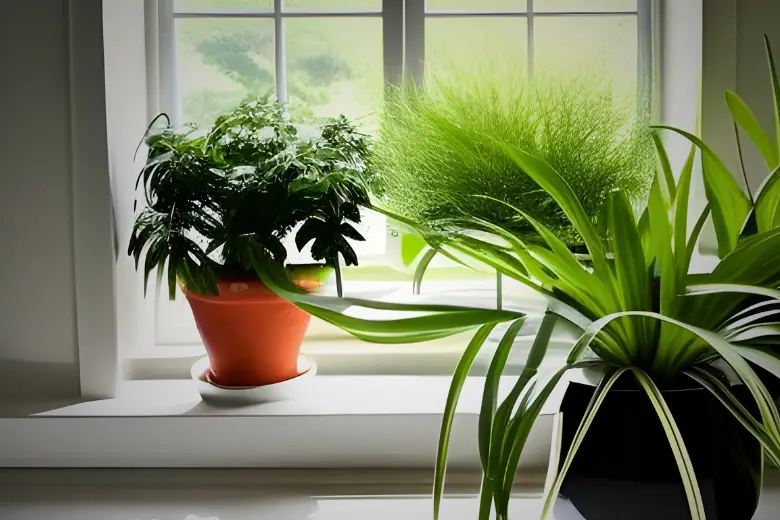We use affiliate links to run our site. When you buy through links on our site, we may earn an affiliate commission, without any added cost to you. Learn more
Are you tired of having a north-facing window that leaves your living space feeling dull and lifeless? Well, we’ve got the solution for you! Introducing the 10 best plants for north-facing windows that will transform your space into a lush and vibrant oasis.
These plants are perfect for low-light conditions and not only add beauty to your surroundings but also have air-purifying properties that create a healthier and more relaxing environment.
But wait, there’s more! Not only are these plants aesthetically pleasing and good for your health, they are also incredibly easy to care for. You don’t need to be a plant expert to keep them thriving in your north-facing window.
From the snake plant to the peace lily, we’ve got you covered with the best options for your north-facing window. These plants are sure to create a warm and inviting atmosphere that you’ll love spending time in.
So, whether you’re looking to add a touch of green to your home or office, these plants for north-facing windows are the perfect solution. Get ready to sit back, relax and enjoy your new green oasis!
10 Best Plants for North-Facing Windows
1. Snake Plant (Sansevieria)
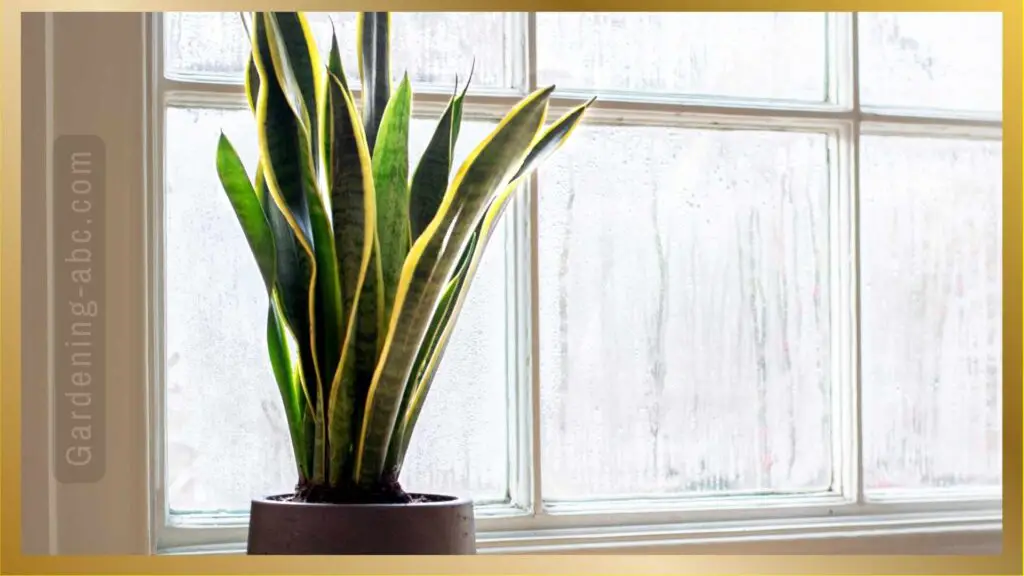
The snake plant, also known as mother-in-law’s tongue, is a low-maintenance plant that is perfect for north-facing windows. It thrives in low-light conditions and doesn’t require frequent watering. It can also improve indoor air quality by removing toxins from the air.
What makes the snake plant even cooler is its unique appearance. With tall, pointy leaves that resemble snakes slithering up from the soil, this plant is sure to add a touch of intrigue and drama to any space.
Plus, it comes in a variety of different colors and patterns, from classic green and yellow to striking variegated shades of white and green or even black and gold.
When it comes to caring for your snake plant, there are a few tips to keep in mind.
First, make sure to water it sparingly, as too much water can cause the roots to rot. The snake plant prefers dry soil and can even tolerate being slightly underwatered.
Secondly, while this plant can survive in low light conditions, it does thrive with a bit of bright, indirect sunlight.
Finally, be sure to repot your snake plant every few years, as it can quickly outgrow its container and become rootbound.
2. ZZ Plant (Zamioculcas zamiifolia)
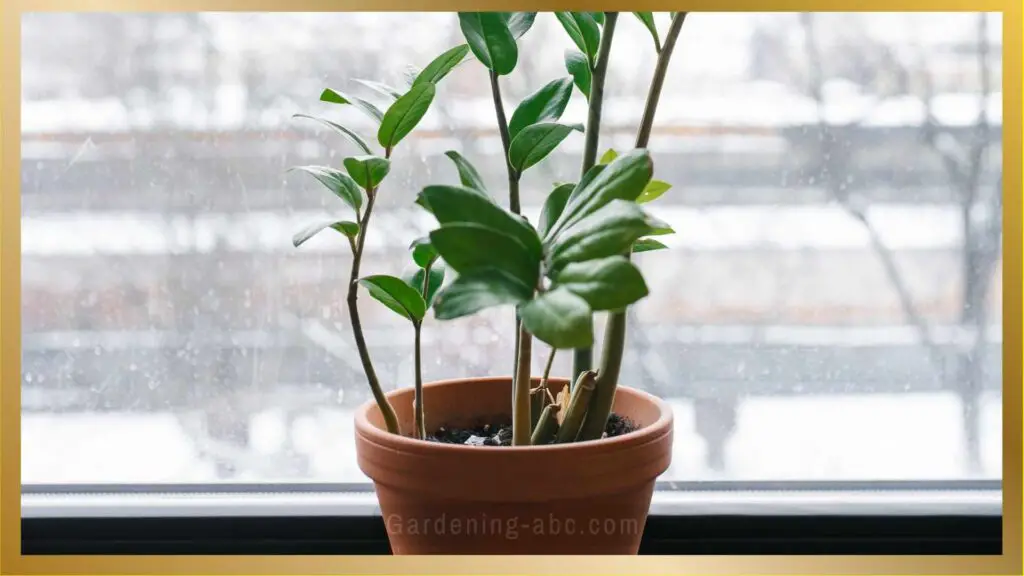
If you are looking for a plant for a north-facing window that exudes elegance and style, without requiring too much attention? Then the ZZ plant can be a great choice for you. With its glossy, dark green leaves, this plant is the epitome of chic, adding a touch of sophistication to any space.
But that’s not all – the ZZ plant is a low-maintenance gem that can survive in low light conditions, making it perfect for your north-facing windows or those tricky corners of your home or office that doesn’t get a lot of sunlight.
And the best part? This plant is a natural air purifier, cleaning the air of pollutants and toxins while releasing oxygen in return. It’s like having a personal, stylish air cleaner right in your space!
If you want your ZZ plant to thrive, here are a few tips to keep in mind.
First, make sure to let the soil dry out before watering, as this plant prefers to be on the dry side. Overwatering can lead to root rot, so be sure to wait until the soil is completely dry before giving it a drink.
Secondly, while this plant can survive in low light conditions, it will do even better with a bit of indirect sunlight.
Finally, be sure to dust the leaves regularly to keep them looking their best.
3. Pothos (Epipremnum aureum)

The pothos is a trailing vine that is perfect for hanging baskets. It can tolerate low light conditions but prefers bright, indirect light. Its leaves are variegated in shades of green and yellow, making it a beautiful addition to any room.
The Pothos is an excellent choice for a north-facing window because it can tolerate low light conditions, but also loves bright, indirect light. This means it can thrive in a range of lighting situations, making it a versatile choice for any space.
One of the best things about the Pothos is its low-maintenance nature – it doesn’t require a lot of watering or attention to thrive. However, to keep it looking its best, it’s important to keep the soil moist, but not too wet. You can also give it a boost with some occasional fertilizer.
To make the most of your Pothos, consider hanging it in a basket or placing it on a high shelf where its trailing vines can really shine. And don’t be afraid to prune it back if it starts to get too long – this will encourage new growth and keep your plant looking full and healthy.
4. Peace Lily (Spathiphyllum)
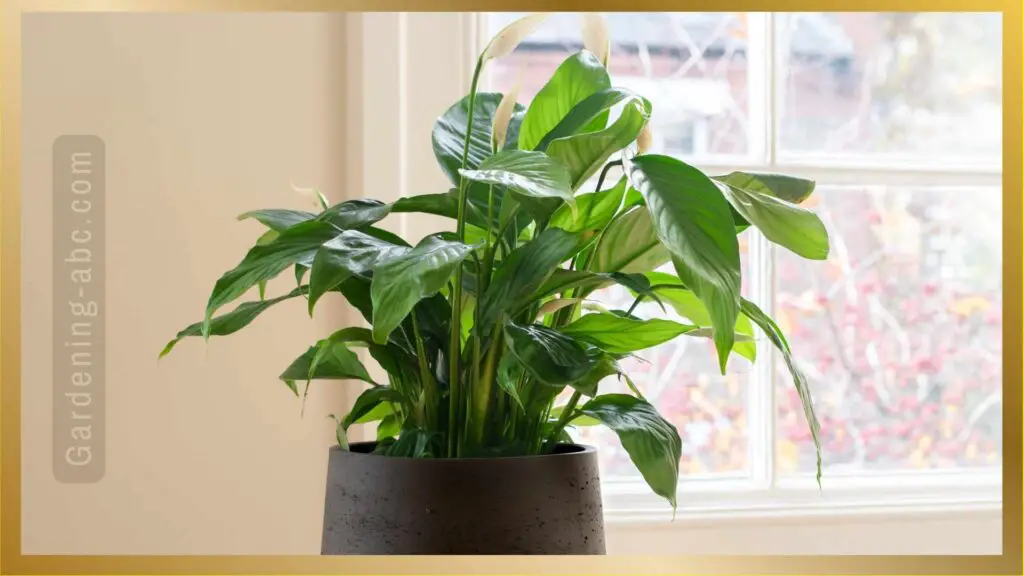
One of the best things about the Peace Lily is its ability to thrive in low-light conditions. This makes it an excellent choice for north-facing windows, which often receive less direct sunlight than other windows in your home or office.
It has large, glossy green leaves and produces white flowers that can last for weeks. It is also an air-purifying plant, making it a popular choice for homes and offices.
To keep your Peace Lily looking its best, make sure to keep the soil moist, but not too wet. You can also give it a boost with some occasional fertilizer. And if you notice the flowers starting to wilt, simply remove them and your plant will continue to thrive.
One thing to keep in mind with the Peace Lily is that it is toxic to pets if ingested, so make sure to keep it out of reach of any furry friends you may have. With proper care and attention, your Peace Lily will continue to bring beauty and freshness to your north-facing window for years to come.
5. Spider Plant (Chlorophytum comosum)
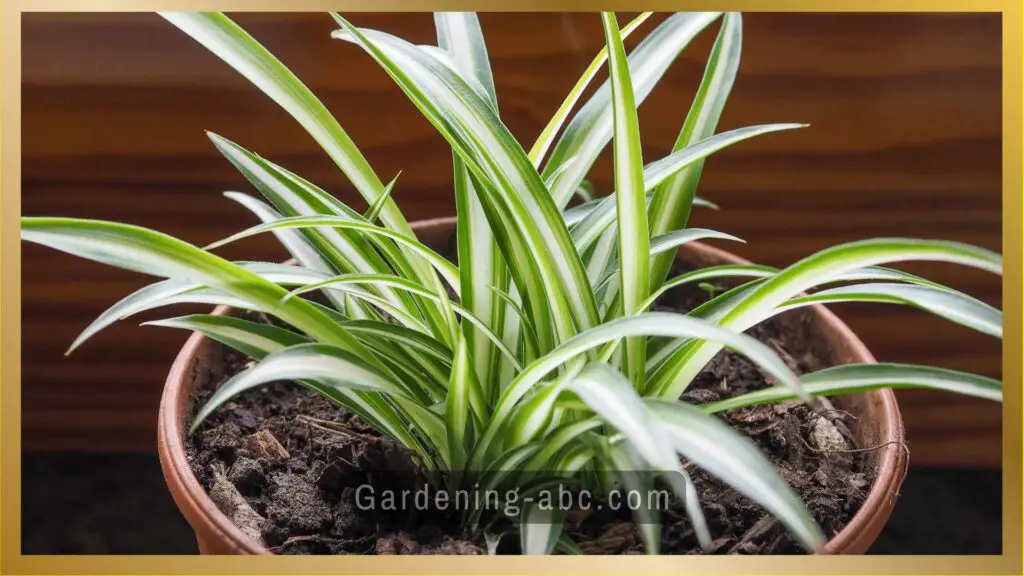
A spider plant is a robust plant and it can bring some natural allure to your north-facing window. This classic houseplant is distinguished by its long, slender leaves that gracefully arch over the edges of its container, lending a beautiful and organic appearance.
One of the Spider Plant’s most significant advantages is its ability to thrive in low-light environments, making it an ideal option for north-facing windows that receive less direct sunlight compared to other windows in your house or office.
However, the benefits of the Spider Plant do not end there; it is also a natural air purifier that helps to remove harmful toxins such as formaldehyde and benzene from the air and enhance the air quality in your living or working space.
To keep your Spider Plant thriving, make sure to water it regularly, but avoid over-watering, as it can be susceptible to root rot. You can also give it an extra boost by fertilizing it occasionally. Additionally, if you spot any brown tips on the leaves, trim them off to stimulate new growth.
One of the most remarkable things about the Spider Plant is its ability to generate spiderettes – small offshoots that can be propagated into new plants. This makes it a fantastic option for anyone looking to expand their plant collection or share their love of gardening with friends and family.
6. Dracaena (Dracaena marginata)
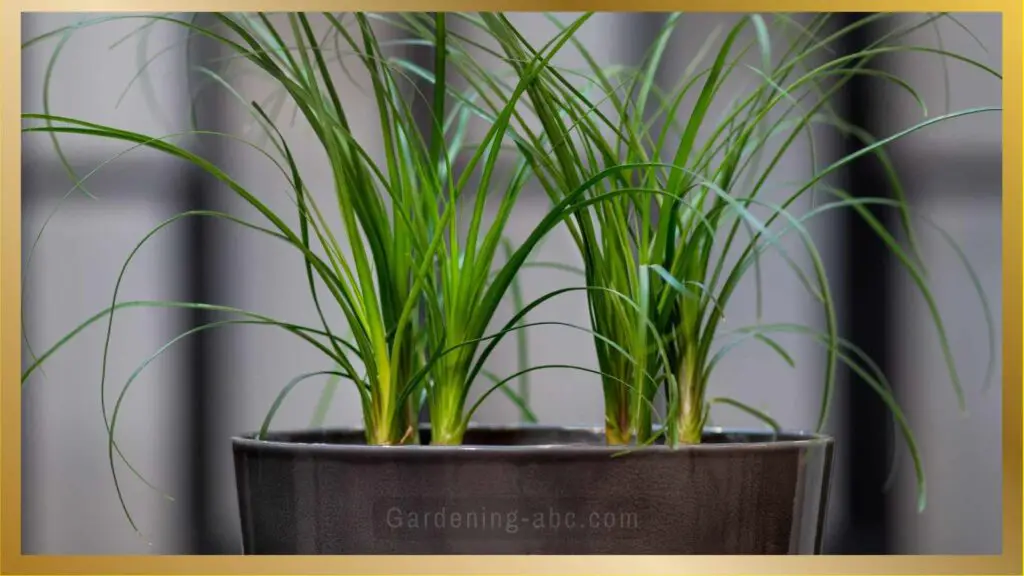
Dracaena is a stunning houseplant that can add a touch of exotic elegance to your north-facing window. With its long, slender leaves that are striped in shades of green and red, it’s sure to be a showstopper in any room.
And the best part? It’s low maintenance and can thrive in low-light conditions. Not only does it look great, but it’s also a natural air purifier, helping to remove harmful toxins from the air.
So why not bring a bit of tropical paradise into your home with a beautiful dracaena? Just remember to water it regularly and avoid over-watering, as it prefers slightly dry soil.
7. Chinese Evergreen (Aglaonema)
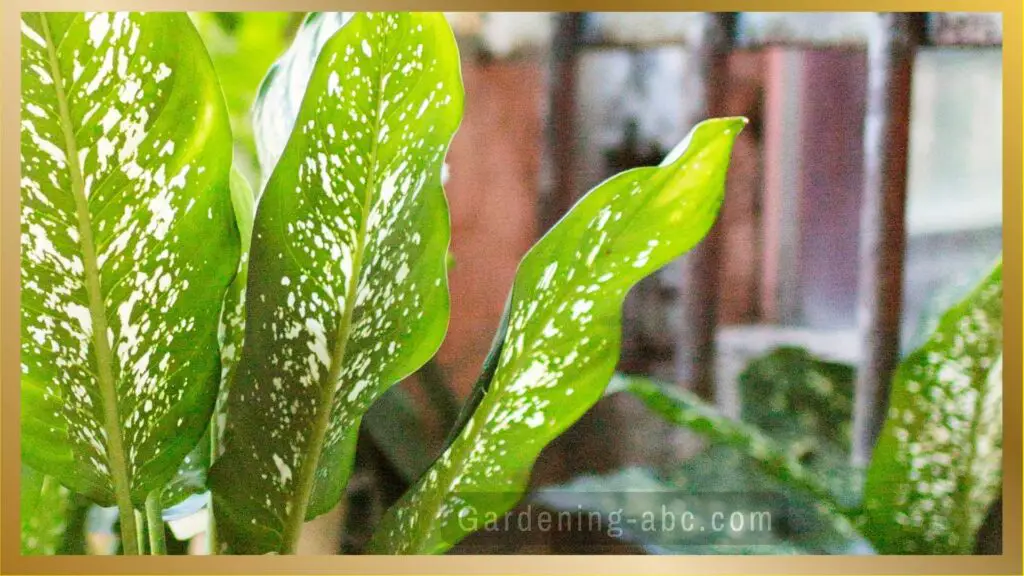
This gorgeous plant is an excellent choice for growing in a north-facing window, as it can thrive in low-light conditions.
The Chinese Evergreen has large, glossy leaves that are typically green, but some varieties have touches of silver or white.
The leaves can be oval or lance-shaped, and some have unique patterns that add visual interest to the plant.
This plant can also produce small, inconspicuous flowers that bloom close to the base of the leaves.
Chinese Evergreens are also great for improving air quality. They can filter out harmful toxins like formaldehyde and benzene, making them a fantastic addition to any home or office space.
8. Cast Iron Plant (Aspidistra elatior)

With its lush, green foliage that stays beautiful all year round, the Cast Iron Plant is a popular choice for both homes and offices. Its leaves are thick and leathery, and it has a lovely, symmetrical shape that adds a touch of elegance to any room.
Growing the Cast Iron Plant is a breeze, even for those who are new to plant care. It can tolerate low light conditions, but it also thrives in brighter light if it’s indirect.
Water the plant when the soil feels dry to the touch, but be careful not to overwater it as it is prone to root rot.
If you’re unsure whether to water it or not, err on the side of caution and wait a few days before rechecking the soil.
Another benefit of the Cast Iron Plant is that it is resistant to pests and diseases, making it a low-maintenance addition to your home or office.
It’s also a great air-purifying plant, helping to remove harmful toxins from the air and creating a healthier living environment.
9. Philodendron (Philodendron scandens)

The philodendron is a popular choice for indoor gardening, and it’s easy to see why. It’s a low-maintenance plant that can tolerate a wide range of conditions, including low light and drought. Plus, it’s known for its air-purifying qualities, making it a popular choice for homes and offices.
One of the great things about the philodendron is that it’s a versatile plant that can be grown in a variety of ways. It can be trained to climb up a trellis or allowed to trail down from a hanging basket. And with its beautiful, heart-shaped leaves, it’s sure to be a stunning addition to any space.
Here are a few tips to keep in mind.
First, make sure to place it in a well-draining potting mix, as it prefers slightly moist but well-drained soil.
Water it regularly, but be careful not to over-water, as this can lead to root rot.
And while the philodendron can tolerate low light, it will grow best in bright, indirect light.
10. Dieffenbachia (Dieffenbachia seguine)
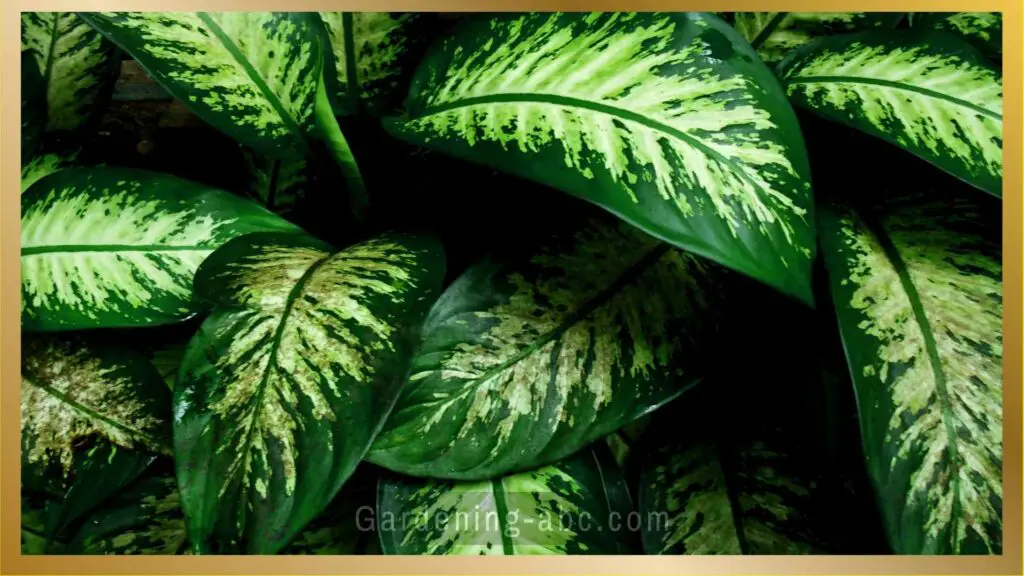
Dieffenbachia, also known as the dumb cane, is a beautiful plant that features large, colorful leaves with striking patterns.
The leaves can be a mix of green and white, or green and yellow, and some even have pink or red accents. The plant can grow up to six feet tall, so it’s perfect for adding some height to your indoor jungle.
When it comes to growing Dieffenbachia, there are a few tips to keep in mind. First, make sure the soil is well-draining and never let it dry out completely.
They prefer humid conditions, so consider placing a tray of pebbles filled with water under the pot to increase the humidity in the air. Additionally, while Dieffenbachia can tolerate low light conditions, it will grow best in bright, indirect light.
One thing to keep in mind when caring for your Dieffenbachia is that it’s toxic if ingested, so keep it away from pets and young children. If you have curious pets, consider hanging the plant or placing it on a high shelf.
Frequently Asked Questions(FAQs):
Can these plants survive in low-light conditions all year round?
Yes, the plants on our list of the 10 best plants for north-facing windows are specifically chosen for their ability to thrive in low-light conditions.
These plants are perfect for those who want to add some greenery to their living space but don’t have access to a lot of natural light.
You can rest assured that these plants will be able to survive and even thrive in your north-facing window all year round.
Can I grow herbs in a north-facing window?
Yes, you can grow herbs in a north-facing window. However, it’s important to choose herbs that are known for their ability to thrive in low-light conditions.
Some of the best herbs to grow in a north-facing window include parsley, mint, and chives. These herbs not only add a touch of green to your living space but are also great for adding flavor to your favorite dishes.
What are some flowering plants that can thrive in a north-facing window?
If you’re looking to add some color to your north-facing window, there are a few flowering plants that can thrive in low-light conditions. Some of the best options include the peace lily, African violet, and begonia.
These plants are not only beautiful but also have air-purifying properties that can help create a healthy and relaxing environment in your home.
Are there any plants that can tolerate cooler temperatures in a north-facing window?
Yes, there are plants that can tolerate cooler temperatures in a north-facing window. Plants such as the snake plant, spider plant, and pothos are known for their ability to tolerate cooler temperatures and are perfect for north-facing windows.
These plants are also low maintenance and easy to care for, making them ideal for those who want to add some greenery to their living space without a lot of fuss.
Can I grow vegetables in a north-facing window, and if so, which ones are best suited for this type of environment?
Yes, you can grow vegetables in a north-facing window, but it’s important to choose vegetables that are suitable for low-light conditions. Some of the best vegetables to grow in a north-facing window include leafy greens such as lettuce, spinach, and kale.
These vegetables don’t require a lot of light and are perfect for those who want to grow their own fresh produce at home.
Can these plants be toxic to pets?
Some of these plants, such as the peace lily and philodendron, can be toxic to pets if ingested.
It’s best to keep them out of reach of pets and children or choose pet-safe plants if you have pets in your home.
Can these plants be grown outdoors?
Most of these plants are meant to be grown indoors, but some can be grown outdoors in the right conditions. It’s best to check the specific requirements for each plant before attempting to grow them outdoors.
Conclusion:
Growing plants in a north-facing window is a great way to add greenery and life to your indoor space. With the right plants and care, you can create a thriving indoor garden that will uplift your mood and add a touch of nature to your home or office.
We hope this article has provided you with some great ideas for plants that can thrive in low-light conditions.
If you found this article helpful, please share it with your friends and family who might also be interested in growing plants in their north-facing windows. Don’t forget to explore more articles on our site for more plant care tips and ideas.
Finally, we encourage you to take action and start your own indoor garden today. Choose the plants that suit your personal style and space, and enjoy the many benefits that come with growing plants indoors.
Give them the love and care they deserve, and watch them flourish in your home.
Amazon and the Amazon logo are trademarks of Amazon.com, Inc, or its affiliates.

Hi there! My name is Prasenjit and I’m an avid gardener and someone who has grown a passion for growing plants. From my hands-on experience, I have learned what works and what doesn’t. Here I share everything I have learned.
